Home > Auctions > 3 - 8 September 2024
Ancient Art, Antiquities, Natural History & Coins
Auction Highlights:
From an early 20th century collection.
Cf. The Metropolitan Museum, New York, accession number 40.9.26, for similar; cf. Andrews, C., Amulets of Ancient Egypt, London, 1994, pl.65 (n).
Amulets in the form of poppies were used to heal, alleviate pain, and ward off death. This type of amulet was also associated with Osiris, the Egyptian deity of agriculture, death, and the afterlife.
Acquired 1980-2015.
Ex Abelita family collection.
See Andrews, C., Amulets of Ancient Egypt, London, 1994, for discussion.
Flora-form amulets are thought to symbolise new life, like the growing plants they copied. Many gold palmette elements were found in the New Kingdom tomb of Aper-el at Saqqara, featuring pierced holes rather than a hoop for attachment (Cf. Zivie, A., Découverte à Saqqarah: Le vizir oublié, Paris, 1990, p.149 no.94 for examples).
Acquired before 1979.
From the private collection of Mr F. A., South Kensington, London, UK; thence by descent 2014.
Cf. similar specimens in faience at the Worcester Art Museum, inventory no.1925.539.
For thousands of years, artisans in Egypt created vibrant ceramics to echo the beauty of rare jewels. These ornaments were created with almost every material, colour, and texture imaginable and they come from across Egypt and beyond: vibrant blue lapis lazuli from Afghanistan, glossy black obsidian from Turkey, and aqua-green turquoise from the Sinai. They were worn in life and, after death, they served as precious ornamentation for mummies
Ex Mariaud de Serres, Paris, France, 1990s.
From a London, UK, collection.
Cf. Manley, B., and Dodson, A., Life Everlasting. National Museum of Scotland Collection of Ancient Egyptian Coffins, Edinburgh, 2010, p.114, no.43, for a bead-work shroud incorporating the mask, winged scarab, and Four Sons of Horus.
The Four Sons of Horus were deities responsible for protecting the internal organs of the deceased. Here, on the left, we can see the jackal-headed Duamutef, who protected the stomach, followed by the falcon-headed Qebehsenuef, protector of the intestines, then the human-headed Imsety, who protected the liver and, finally, the baboon-headed Hapy, protected the lungs, on the right.
From the private collection of the late Mrs Belinda Ellison, long time member of the Egyptian Exploration Society, c.1940-2020.
Cf. Matouk, F.S., Corpus du scarabée égyptien. Vol. 2: Analyse thématique, Beirut, 1976, p.412 no. 2439, for similar.
Ex Yorkshire, UK, collection, 1960s-1980s.
Accompanied by an old handwritten identification slip.
Cf. Guidotti, M.C., Vasi dall’epoca protodinastica al Nuovo Regno, Museo Egizio di Firenze, Rome, 1991, pp.174-5 nos. 237-241, for alabaster and limestone vessels of similar body profile.
From an early 20th century collection.
Cf. Andrews, C., Amulets of Ancient Egypt, London, 1994, item 29(c).
The cat was sacred to Bastet, a protective mother goddess and the daughter of the sun god Re. Amulets provided the wearer with the goddess's protection.
From a private Paris collection, France, 1960s.
From the personal collection of Derek Rogers, Suffolk, UK.
Property of a Cambridgeshire, UK, gentleman.
From an early 20th century Home Counties, UK, collection.
From a central London ADA dealership, 1980-1990.
Flowers were symbolic of rebirth due to the daily reopening of their petals after nightfall. As a result, they were widely used in domestic settings, religious and funerary contexts, and as adornments. Similar rosette discs, like those recovered from the Ramesside Period palace at Qantir, were used as decorative elements in royal palaces.
Acquired 1970s onwards.
Private collection of Michael O'Hara, Cambridgeshire, UK.
Cf. Kalloniatis, F., The Egyptian Collection at Norwich Castle Museum, Oxford, 2019, pl.17 no.117, for a similar openwork example.
The wedjat eye amulet symbolised the eye of the falcon god Horus. According to ancient Egyptian mythology, Horus’ eye was gouged out by his treacherous uncle Seth and then healed by Thoth. While these amulets could be worn for protection in daily life, they also played a significant role in the funerary sphere. Wedjat eye amulets were believed to offer protection to the deceased’s mummy and could serve as substitutes for daily food offerings.
301 - 312 of 3369 LOTS

.jpg)

.jpg)
.jpg)
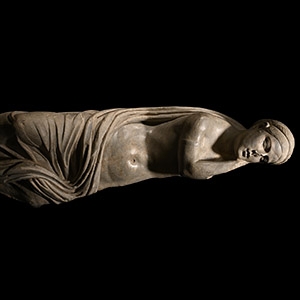
.jpg)
.jpg)


.jpg)
.jpg)

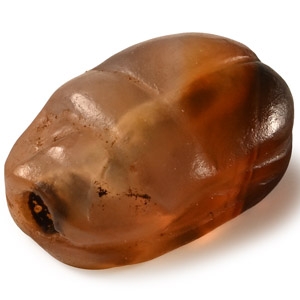
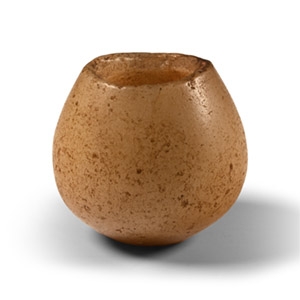
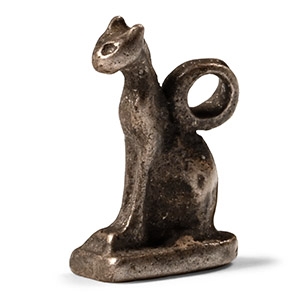

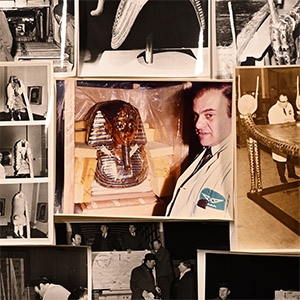
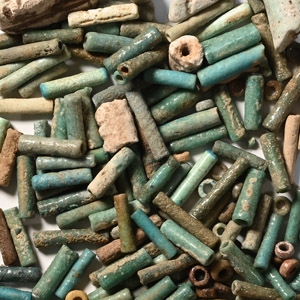

.jpg)



